Part Two
By John Ballantyne and Kevin O'Brien
At the end of every show, we try to do a little bit of a wrap-up
to evaluate the way things generally went. This year, at Sun-n-Fun,
we sent our most experienced guys to their respective ends of the
field to assess the show. We talked to exhibitors, attendees, happy
campers, and a couple of just plain campers. Here's Part Two of
what they told us, and what we saw with our own eyes.
Antique Aviation
"Each year, there are fewer real antiques, and
more Bonanzas and things," the owner of a 1920s Stearman said. Of
course, when he bought the Stearman over twenty years ago, it was
about the same age then as the earliest Bonanzas are today, but his
point was well taken. There were fewer of the civil airplanes from
the era before 1950 than we're used to seeing.
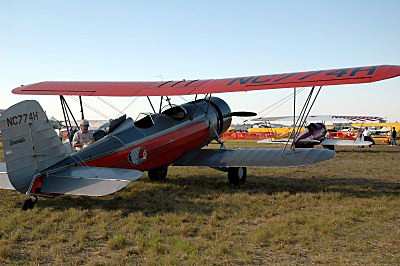
There were enough antiques to be interesting, but few enough of
them to make one concerned for the future of vintage aircraft.
What's more troubling for a lover of these old machines, is that
antiques up for sale, including former champion machines offered ad
very attractive prices, were not finding buyers.
The same sort of thing is happening in the larger civil aircraft
preservation area. In a wide-ranging interview, Eclipse Aviation
CEO Vern Raburn told us that while certainly money is a concern in
this age of escalating fuel prices, one of the biggest threats to
survival of vintage aviation is the inevitable decay of what he
called "tribal knowledge" of aircraft systems and maintenances. We
were talking specifically about Lockheed Constellations, a type he
knows intimately, but they apply quite generally.
General Aviation
You could say that experimental's loss is general aviation's
gain. The GA end of the show, which seems to be where Sun-n-Fun's
emphasis is going, was quite successful, with highlights including
the first public showing of the Eclipse very light jet, the
introduction of the first three-panel Avidyne system (in the New
Piper Malibu Meridian), and the reintroduction of the Liberty XL2
after Liberty secured new financing.
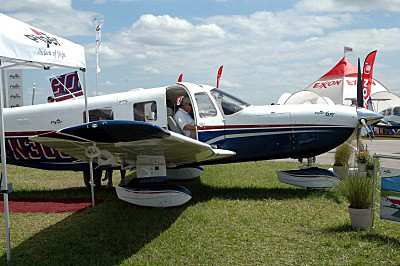
Most every plane manufacturer was represented, including such
well-known names as Lancair Certified, Cirrus Design, Mooney,
Maule, and even WACO.
In addition, smaller niche makers were present, like IndUS
Aviation (look for an interview real soon) which builds the Thorp
T-211 as a Special Light Sport aircraft, and even two Cub makers,
Legend Cub with a light-sport Cub, and Cub Crafters with its own
fully type-certified version (Cub Crafters will be adding a
light-sport version shortly).
Flight training vendors were prominent, and they indicated that
business was thriving, despite the perception of mixed prospects
for today's commercial pilot market. The Age 60 Rule, if not
overturned, will lead to a tsunami of retirements.
Finally, vendors of every type of part, accessory, avionics,
ancillary equipment, and service that one might conceivably apply
to an aircraft were there in strong numbers.
Rotorcraft
This is where you need to go if you're looking for grumbling,
but it's a good-natured sort of thing. "Choppertown" is so far
removed from the main show area that ninety-something percent of
attendees have absolutely no idea it's there. Sun-N-Fun does very,
very little to inform attendees about it, and transport to and from
is dodgey. It takes almost 40 minutes to walk from show center, and
almost 20 to ride on a rented ($55/day) cart.
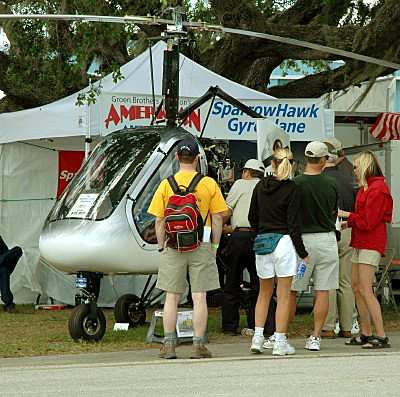
The response of some vendors has been to abandon the show;
others have simply abandoned Choppertown and show their wares in
booths in the main show area, while conducting demo flights on
other fields. These vendors included American Autogyro Incorporated
(AAI), Rotary Air Force Marketing, and Rotorway. Of course, the
more vendors leave Choppertown the more it becomes Ghost Town.
That's a pity, as this year saw two new developments on display
there: The Butterfly, LLC's Super Sky Cycle, which wasn't yet
flying (and which Aero-News has covered), and the Wasp turbine
helicopter (report soon).
Safety
Although there was Sun-n-Fun 2005 was one of the safest
Sun-n-Fun events ever, with no fatalities or serious injuries on or
near the show site. This is welcome news and a great many deserve a
piece of the credit. There was a mishap at the end of Runway 9 on
Thursday, in which T-6 apparently ran off the runway, suffering
severe wing damage. A woman -- one of two people on board -- was
slightly injured.
We saw evidence of several safety improvement attempts. The
safety zone under the UL approach area, which was a relatively
recent improvement (last year?) was still strictly maintained. New
this year was an attempt to separate people and planes on the long
taxiway towards antique camping, ultralights and rotorcraft. This
effort seemed to wane as the show wore on, perhaps because the
safety crew ran out of volunteers, which is unfortunate. The
volunteers also went off duty just as the airshow ended
at 1700 -- in other words, just as everybody hell-bent for
leather on departing fired up and started taxiing.
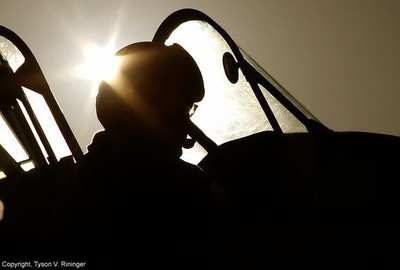
There was still too much mixing of people and props, and
especially mixing of people who are not familiar with airplanes --
moving airplanes. This is especially Perhaps in
the off-season they can work out a better way to do this.
On one day, a military performer repeatedly directed his
high-energy aircraft towards the crowd. This should have been
covered in pre- and post-flight briefings; the next day, it didn't
happen again.
Exhibitor Surprises
There are always a couple of exhibitors that you'd expect to
see. In this case... we didn't (or maybe we just missed 'em). We
didn't see Jim Bede's new operation anywhere, although longtime
Bede BD-5 completion assistance shop Alturair had brochures on the
current BD-17 and BD-18 sport planes. We also didn't see DeltaHawk
engines anywhere, which we didn't expect after all the interest
their diesel V-4 drew at the last Oshkosh.
The company's website indicates a planned presence at Aero
2005 in Friedrichshafen, Germany later this week, and company
executives say they're still on track, preparing for certification
testing. Finally, we were disappointed that Rotor Flight Dynamics
wasn't present, although customers did demonstrate the company's
Dominator gyroplanes. We ran into RFD honcho Ernie Boyette in
Choppertown and got an earful of his past dissatisfaction with
Sun-n-Fun, which was the cause of his company's absence.
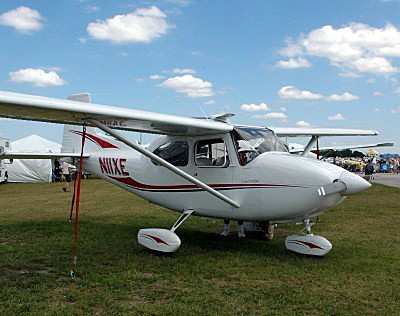
The flip side of that is the exhibitors we expected to be
absent, that showed up. One of them was Luscombe, which had a very
nice price on the Luscombe 11 Sedan -- no tent, unlike previous
years, but just the airplanes themselves, confusing show attendees
who wondered, sometimes aloud, what happened to the tail of that
172. Another company professing "I'm not dead yet," in this case
complete with Pythonesque accents, was Europa, represented by
a number of British builders, spreading the word that the airplane
has been saved, although the previous company (and its American
reps) couldn't be rescued from the financial mismanagement of the
previous owner. More than "not dead yet," the company is reborn,
and delivering parts and kits. Customers stiffed by the old company
may have the opportunity to get their missing parts at cost from
the new company, and customer and builder support continues as
before.
Some Overall Impressions Which Don't Fit Anywhere Else
The weather was great. It was neither too hot nor too windy, and
there were no cold, blustery or rainy days. The winds were a bit
strong for the ultralights on occasion and some early morning
balloon and powered-parachute activities had to be cancelled, but
it was, all in all, perfect weather.
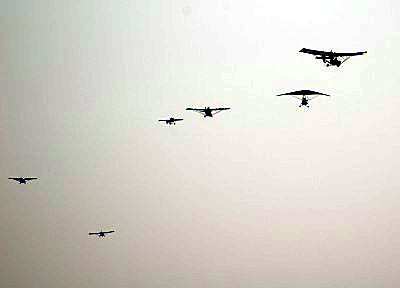
The Lakeland Police Department's Jack Gillen told us that,
"nothing happened," with a broad smile. "It was kind of slow. And
when Jack isn't busy, that's a good thing."
It was very hard to get a handle on attendance this year. Some
indicators were of a reduced attendance: for instance, there was
seldom a wait at the gate, or for concessions. We never saw SRO at
the food court tables. Ray the cart guy, for another example,
didn't "sell out" of rental carts, even on Saturday. On the other
hand, most of the exhibitors were relatively happy.
The number of volunteers this year seemed to be vastly lower.
Was this because EAA sponsorship was withdrawn? (Prior to 2005,
this was the "EAA Sun-n-Fun Fly-In;" now it's just the "Sun-n-Fun
fly-In" and even the corporate name has been changed). Or did fewer
volunteers, well... volunteer? Only the organizers know for sure,
but there were fewer volunteers on the ground.
One entirely unscientific indicator pointed to a reduced press
presence as well. In most cases, the limited number of lockers
in the Media Center are scarfed up on the very first day. There was
no day this year that a reporter didn't have a couple of open
lockers to choose from.
There was some carping about increased admissions prices, but
there always is. On the other hand, camping rates apparently held
the line from 2004 -- one way to create happy campers.
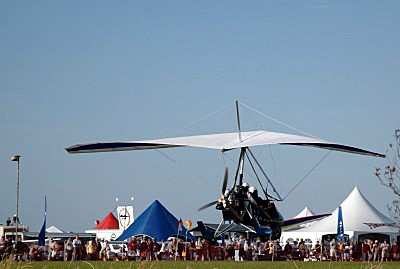
Overall, this seems to us to be becoming a GA trade show with
less grassroots aviation content, accompanied by an airshow which
can please both the aviation and general public. This may be
inevitable, given the relative financial strength of the various
sectors of the aviation market, but then, maybe it's not.
 ANN's Daily Aero-Linx (05.06.25)
ANN's Daily Aero-Linx (05.06.25) ANN's Daily Aero-Term (05.06.25): Ultrahigh Frequency (UHF)
ANN's Daily Aero-Term (05.06.25): Ultrahigh Frequency (UHF) ANN FAQ: Q&A 101
ANN FAQ: Q&A 101 Classic Aero-TV: Virtual Reality Painting--PPG Leverages Technology for Training
Classic Aero-TV: Virtual Reality Painting--PPG Leverages Technology for Training Airborne 05.02.25: Joby Crewed Milestone, Diamond Club, Canadian Pilot Insurance
Airborne 05.02.25: Joby Crewed Milestone, Diamond Club, Canadian Pilot Insurance









